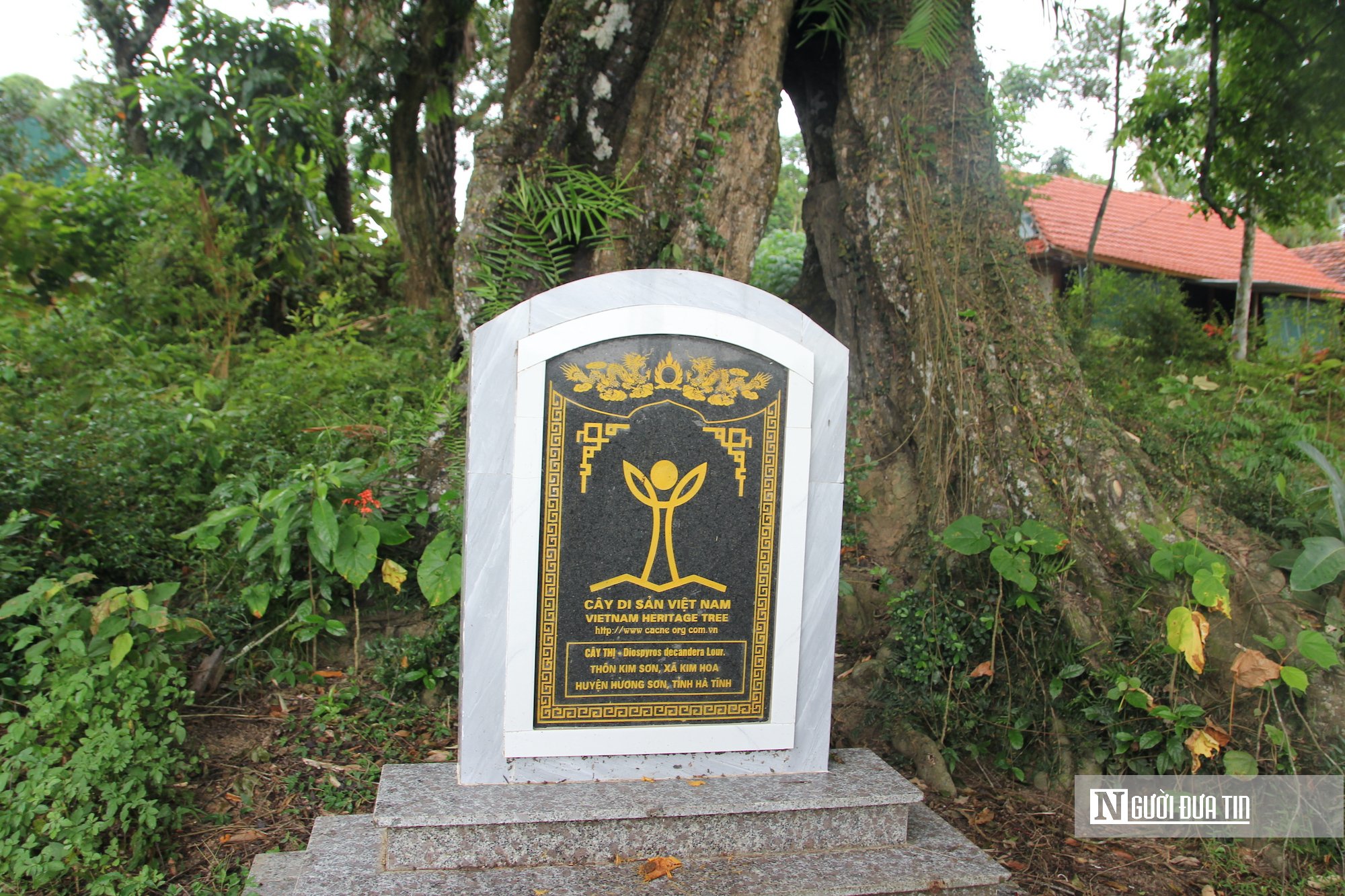A 27-year-old woman living in Thanh Hoa is in critical condition after using a weight loss supplement containing the banned substance Sibutramine.
Medical news on March 15: Critical condition due to using functional foods containing banned substances
A 27-year-old woman living in Thanh Hoa is in critical condition after using a weight loss supplement containing the banned substance Sibutramine.
Critical condition due to use of functional foods containing banned substances
The 27-year-old patient, after using a health food product called Green Pumpkin Detox, which supports weight loss and fat burning, encountered serious complications. After more than 3 weeks of treatment at Bach Mai Hospital, the patient's condition is still very critical with severe nerve damage, kidney failure and vision loss.
 |
| Illustration photo. |
According to Dr. Nguyen Huy Tien, Poison Control Center, Bach Mai Hospital, the patient was admitted to the hospital with impaired consciousness, nerve damage and kidney failure. After examination, doctors determined that the sample of functional food the patient used contained Sibutramine - a substance banned in functional foods and pharmaceuticals in Vietnam.
This substance was previously used in obesity treatment drugs, but has been banned due to the risk of serious health effects, especially cardiovascular and neurological effects.
At the Poison Control Center of Bach Mai Hospital, many patients have been hospitalized due to poisoning from weight loss supplements containing Sibutramine, causing dangerous symptoms such as coma, convulsions, brain damage and kidney failure. Doctors have repeatedly warned about the dangers of using weight loss supplements of unknown origin and containing banned substances.
Doctor Nguyen Trung Nguyen, Director of the Poison Control Center, said that Sibutramine is a highly toxic substance, similar to the drug Amphetamine, which can be dangerous to health if used for a long time or overdosed. This case is a typical example of using functional foods of unknown origin and containing banned substances.
Doctors recommend that people who want to lose weight should consult a doctor and choose products licensed by the Ministry of Health and distributed through official channels, avoiding buying through social networks or unclear sources.
Using functional foods incorrectly or of unknown origin can cause many side effects such as dizziness, nausea, fatigue, rapid heartbeat, shortness of breath, and even be life-threatening.
In addition, nutritionists encourage people to apply scientific weight loss methods, combining a reasonable diet and exercise to achieve sustainable results. A diet rich in fiber, minimizing starch and fat, along with regular exercise will help the body stay healthy and lose weight effectively without using weight loss support products of unknown origin.
“To lose weight safely and effectively, you need to be guided by a specialist, and more importantly, you must persevere with a healthy diet combined with exercise. Remember that no pill or functional food can replace a scientific diet and regular exercise,” Dr. Nguyen Trung Nguyen advised.
Recently, the Food Safety Department, Ministry of Health has also discovered a series of weight loss and physiological support products containing banned substances such as Sibutramine, Sildenafil, Phenolphtalein.
These products are widely sold on social networks and are often advertised with attractive words, promising quick weight loss without exercise.
The Food Safety Department recommends that people should not use these products, and if they discover products of unknown origin or containing prohibited substances, they should immediately notify the authorities for timely handling.
Two rare gene mutations cause fetuses to have strange syndrome
13-week-old fetus with edema of the head and body. Doctors discovered a gene mutation on chromosomes 3 and 16, related to Noonan syndrome, lymphedema, and double eyelashes.
Dr. Nguyen Thi Mong Nghi, who directly treated the pregnant woman, said that the pregnant woman was 30 years old, first pregnancy, ultrasound at 13 weeks recorded a nuchal translucency thickness of 6 mm (less than 3 mm is normal), the fetus had a lymphatic cyst in the posterior neck measuring 10x3x13 mm, and edema of the skin in the head and body.
The pregnant woman was advised by the doctor of the Center for Fetal Medicine to undergo chorionic villus biopsy for genetic testing to screen for fetal abnormalities. The doctor took about 20 mg of chorionic villus through a needle inserted from the abdominal wall into the uterine cavity under the guidance of an ultrasound machine. The chorionic villus biopsy results showed that the fetus had mutations in the FOXC2 and RAF1 genes.
Mutations in the FOXC2 gene, found on chromosome 16, cause lymphedema-distichiasis.
The FOXC2 gene is important for the normal development and maintenance of venous valves, lymphatic valves, and is involved in the development of veins, lungs, eyes, kidneys, urinary tract, cardiovascular system, and immune cell transport system (lymphatic vessels).
This is a rare genetic multisystem disorder characterized by swelling of the legs due to fluid accumulation, abnormal eyelash development causing the child to have two rows of eyelashes. This syndrome can cause complications including skin infections, cellulitis, ptosis, eye damage, vision loss or corneal scarring, varicose veins, congenital heart defects, arrhythmias, etc.
Lymphedema usually develops during puberty, but some cases can develop before birth or in adulthood.
Mutations in the dominantly inherited RAF1 gene, located on chromosome 3, which controls cell growth and division, are associated with Noonan syndrome. The disease affects multiple organs, ranging from mild to severe.
Children are born with large heads, high foreheads, widely spaced eyes, ptosis, impaired vision, short necks, low-set ears, flat noses, protruding breasts or sunken breasts, and genital abnormalities in boys. Children may have other health problems such as pulmonary valve stenosis, hypertrophic cardiomyopathy, short stature, psychomotor retardation, bleeding disorders, etc.
Two mutations of the FOXC2 and RAF1 genes occurring at the same time are very rare, it is possible that the mutation is new or inherited from the parents, the doctor advised the parents to do genetic testing but the pregnant woman did not agree for personal reasons.
A week later, Dr. Nghi performed another ultrasound examination, and the results showed that the fetus had more edema all over the body, the nuchal fold was 12.3 mm, and the lymphatic cyst in the posterior neck area increased to 16x6x20 mm.
Doctor Nghi assessed that the fetus' condition was getting worse, and that abnormal signs of other organs might appear over time. These abnormalities increased the rate of stillbirth and infant death during or after birth. Therefore, the family requested to terminate the pregnancy at 15 weeks.
Noonan syndrome is primarily inherited in an autosomal dominant pattern, affecting approximately 1 in 1,000 to 1 in 2,500 live births.
This syndrome is associated with thickened nuchal translucency on first trimester ultrasound (11-13 weeks and 6 days). Other manifestations in the fetus include polyhydramnios due to renal malformations, congenital heart disease, short limbs, macrosomia, etc.
There is no cure for the disease, treatment focuses on symptom relief and supportive care.
Children with the disease need multidisciplinary monitoring such as hearing and vision tests in the newborn period; cryptorchidism surgery for boys to reduce the risk of progression to testicular cancer; lifelong monitoring and treatment of congenital heart defects; assessment of short stature for growth hormone treatment...
Lymphedema-bilateral cilia syndrome is inherited in an autosomal dominant manner, with approximately 75% inheritance from parents and 25% due to new mutations.
Fetal ultrasound can detect some signs suggesting this syndrome such as thick nuchal translucency, fetal edema, posterior cervical lymphatic cysts, congenital heart defects... However, these abnormalities are easily confused with other syndromes.
Amniocentesis or chorionic villus sampling is a method to accurately diagnose the cause of fetal malformations. Chorionic villus sampling is performed at 10-13 weeks of pregnancy, amniocentesis is usually performed after 16 weeks.
After determining the cause of the fetal malformation, the doctor will carefully advise on prenatal screening and diagnosis methods to avoid repeating the same situation in subsequent pregnancies. In case of genetic mutations inherited from the father or mother, the doctor will recommend that the family undergo in vitro fertilization, select good embryos, and give birth to healthy children.
Abdominal pain symptoms lead to the discovery of congenital abnormalities
A rare medical case was discovered when a 36-year-old female patient, living in Quang Binh, experienced symptoms of epigastric pain, accompanied by belching.
After visiting Medlatec Cau Giay General Clinic, the patient was diagnosed with polysplenia and intestinal malrotation - two dangerous, rare congenital abnormalities with high mortality rates. However, surprisingly, the patient is still alive and well to this day, a rare occurrence in similar cases.
PTTT patient (36 years old) came to the clinic when she experienced prolonged abdominal pain in the epigastric region and belching. This condition showed no signs of improvement for a week, making her worried and deciding to go to Medlatec Cau Giay General Clinic. During the clinical examination, the doctor discovered an abnormal mass in the left lower rib area.
However, initial tests did not show any obvious abnormalities. To find the exact cause, the doctor ordered the patient to undergo an abdominal computed tomography (CT) scan, which revealed that the patient had two rare congenital abnormalities: a double spleen and intestinal malrotation.
The diagnosis of polysplenia and intestinal malrotation was the primary cause of the patient's abdominal pain. These are rare congenital abnormalities, and the condition is often associated with congenital heart defects, which increase the risk of death in early life.
BSCKI. Le Tuan Anh, Department of Diagnostic Imaging, Medlatec Cau Giay General Clinic, said that polysplenia syndrome and intestinal malrotation are congenital abnormalities that occur during the fetal period.
These abnormalities are often associated with congenital heart defects, leading to a high mortality rate after birth. This patient's case is an extremely rare case of a patient having two congenital abnormalities at the same time without accompanying heart defects, and still living a healthy life to this day.
According to doctors, the mortality rate in patients with polysplenia syndrome without accompanying heart disease can be up to more than 50%. The fact that this patient is still alive and well is a miracle and requires special medical care and monitoring.
Regarding treatment, the doctor prescribed symptomatic medication to relieve abdominal pain. However, with the phenomenon of intestinal malrotation, the patient needs to be further evaluated and considered for surgery to prevent the risk of intestinal volvulus. Timely monitoring and treatment are very important to prevent possible complications.
Polysplenia, also known as “double spleen,” is a rare congenital abnormality that occurs during fetal life. The condition is primarily found in women and can be diagnosed early through an abdominal ultrasound. However, many cases of polysplenia may be missed during ultrasound, especially when pregnant women do not undergo adequate screening tests.
Although the cause of polysplenia syndrome is not clearly identified, the following factors may be associated with the occurrence of this abnormality: embryonic abnormalities, genetics, chromosomal abnormalities (although very rare), poorly controlled diabetes in early pregnancy, maternal drug exposure or substance abuse during pregnancy
Polysplenia syndrome is often associated with many other abnormalities, including congenital heart disease, which accounts for a large proportion (>50%) such as partial atrioventricular canal defect, abnormal pulmonary venous return, or complete atrioventricular block.
Digestive problems: Semicircular pancreas, intestinal malrotation, gallbladder atrophy, biliary tract agenesis. Genitourinary: Renal cysts, renal agenesis, ovarian cysts.
Vascular problems: Dilated inferior vena cava and hepatic veins draining directly into the right atrium. Computed tomography (CT) scans were important in detecting congenital abnormalities in this case.
CT scans use X-rays and digital imaging software to create cross-sectional images of the body, allowing doctors to easily assess internal structures, including soft tissues, blood vessels, and bones. This helps diagnose abnormalities accurately, minimizing the risk of missing lesions, especially those in difficult-to-detect locations.
The case of PTTT patient is a clear demonstration of the importance of early diagnosis and careful monitoring of congenital abnormalities.
Despite the high mortality rate, thanks to timely intervention and the combination of modern imaging diagnostic methods, the patient overcame the risk and continued to live a healthy life. This is one of the rare medical cases, bringing hope and optimism to many patients with serious congenital abnormalities.
Source: https://baodautu.vn/tin-moi-y-te-ngay-153-nguy-kich-vi-su-dung-thuc-pham-chuc-nang-chua-chat-cam-d254065.html




![[Photo] General Secretary To Lam attends the 80th anniversary of Vietnam's diplomacy](https://vstatic.vietnam.vn/vietnam/resource/IMAGE/2025/8/25/3dc715efdbf74937b6fe8072bac5cb30)

































































































Comment (0)